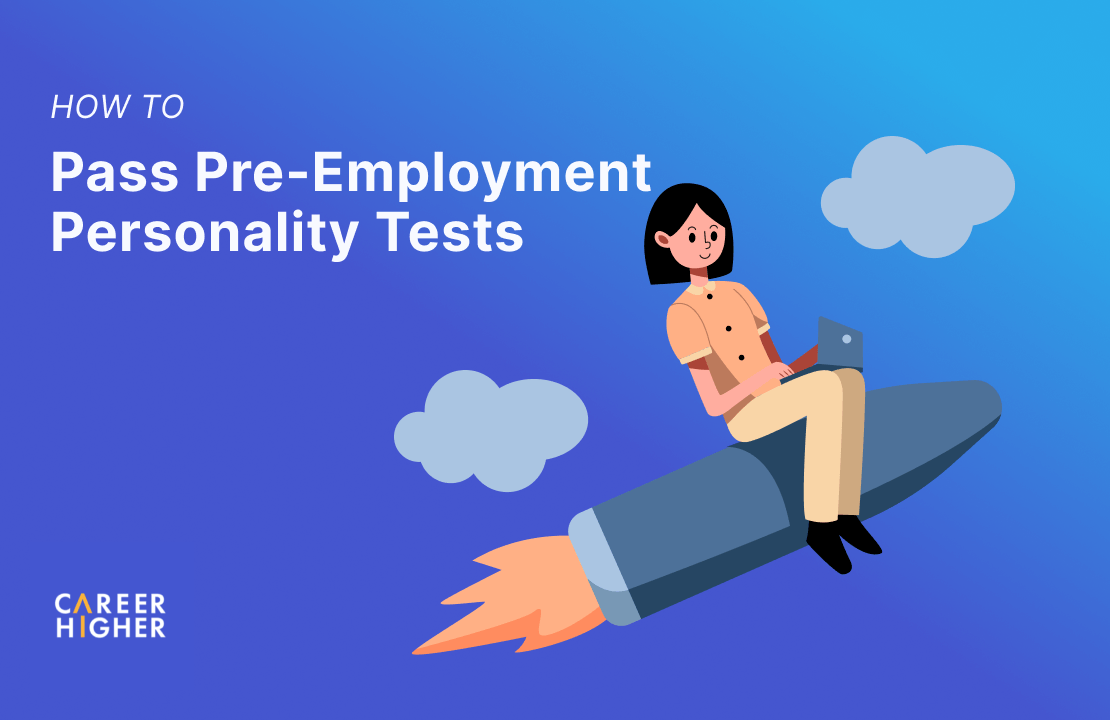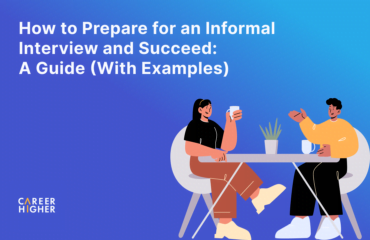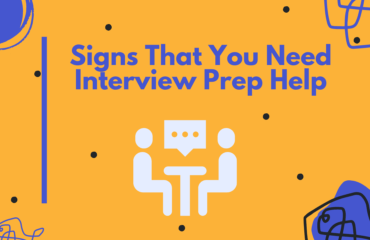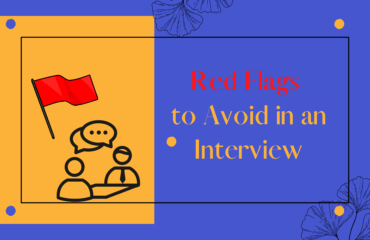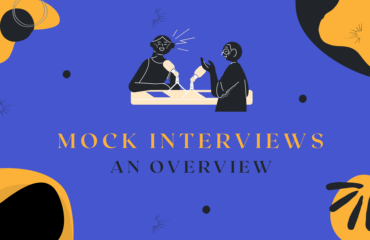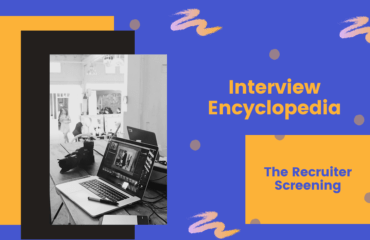Table of Contents
Have you ever taken a personality test before? Whether it was during school, university admissions, or online, chances are that you have come across one. But what is the significance of such tests when it comes to job hunting?
Studies show that nearly 80% of Fortune 500 companies make use of personality tests in their hiring process. As a result, assessments have become an integral tool for employers who seek to filter through large numbers of candidates. In some cases, these evaluations may also be part of the Human Resource interview to gauge a person’s capabilities further. If you’re curious about personality tests and how they could influence your job hunt, this guide will provide you with all the information needed to prepare for them!
What is a Personality Test?
A personality test is a type of psychological assessment which is used to measure your personality traits, such as your level of extroversion and introversion, emotional stability, and level of agreeableness. A personality test can also be used to assess how you would think and feel in different situations. For example, how you would behave differently in the workplace or at home.
There are many types of personality tests out there, each one designed with its own purpose in mind. For instance, some measure general traits such as introversion or leadership skills while others are more specific and evaluate empathy or emotional stability. Ultimately, all of them seek to provide knowledge on how a person would handle day-to-day activities. As for the evaluation itself, recruiters often pick different ones depending on their company’s requirements. That being said, several assessments listed below are normally used:
- The Myers-Briggs Indicator
- The Caliper Profile
- Predictive Index Behavioral Assessment
- DiSC Assessment
- Hogan Personality Inventory
- SHL Occupational Personality Questionnaire
Why Do Recruiters Make Use of Personality Tests?
Personality tests reveal several different characteristics of your core personality. Many of these characteristics are unlikely to change over time. Studies indicate that employees whose personality traits did not match the job role did not perform as well as those who did. As a result, recruiters prefer to screen through candidates in the early stages and only move forward on matching profiles, saving them time and effort.
While an interview provides a great glimpse into a candidate’s personality, the test provides a quantifiable measure of their fit for the job. The numbers then make it easier for recruiters to make a clear decision. The tests help speed up the hiring process and ensure that more suitable candidates move on to the next stage.
Types of Personality Tests & How They Work
There are many personality tests available to measure different aspects of an individual’s personality. Each has its own distinct approach and methodology for measuring specific personality traits, typically requiring test-takers to answer multiple questions. In this blog post, we’ll take a closer look at six types of personality tests:
1) Myers-Briggs Type Indicator
One of the most popular personality tests in the application process is the The Myers-Briggs Type Indicator (MBTI). It is used by many organizations, including Fortune 500 companies, as a part of their hiring process. The MBTI was designed by Carl G. Jung and Isabel Myers, who believed that certain psychological preferences are innate and cannot be changed with training or experience.
According to the MBTI theory, each person falls into one of four temperament groups:
- Introversion vs. Extroversion
- Sensing vs. Intuition
- Thinking vs. Feeling
- Judging vs. Perceiving
Different characteristics are associated with each temperament group and may affect how a person approaches life tasks such as work, relationships, and hobbies. Through its different combinations, MBTI classifies people into 16 categories which are a permutation of the 4 basic traits mentioned above.
Sample Question from MBTI
1) Are you inclined more to be:
i) Fair-minded ii) Sympathetic
2) Are you a person that is more:
i) Routinized than whimsical ii) Whimsical than routinized
3) Are you more inclined to be:
i) Easy to approach ii) Somewhat Reserved
Scoring the MBTI
The MBTI questionnaire consists of a total of 93 questions that test your preferences and reactions in various situations. Each question comes with two choices. You will need to choose the one that suits your preference better. Once you have completed the test, you will be given a 4-letter personality type (INTJ, ESTP, etc.) where each letter corresponds to one of the earlier mentioned traits.
How to prepare for the test
The MBTI classifies you into one of 16 categories. The MBTI test may not be the sole determinant of whether or not you are suitable for a particular role, but it can provide useful insights into your strengths and weaknesses. For instance, certain extroverted traits might be necessary for positions that involve frequent interaction with customers.
Fortunately, you don’t need to worry when taking the MBTI test as there are no wrong answers. To get a better understanding of what employers are looking for, we strongly recommend researching each personality type and its correlation with various job roles.. Also, we suggest practicing mindfulness and self-reflection so that you can identify your personal values, attributes, and preferences better, which can help you make more informed choices during the MBTI test.
2) The Caliper Profile
The Caliper Profile is a personality assessment tool designed to measure how a candidate’s personality traits align with their job performance. It evaluates a wide range of traits, including leadership abilities, assertiveness, management skills, and more. By analyzing the test results, recruiters can determine your potential for success and job fit.
The Caliper Profile uses a combination of cognitive and behavioral assessments to estimate a candidate’s potential performance as an employee. This approach makes it a more effective predictor of job performance. For instance, if your test results show strong management skills and you are applying for a project management role, the recruiter would consider you a strong candidate for the position.
Sample Question from the Caliper Profile
1) I like to plan prior to taking action
- Most
- Least
2) I am good at getting what I want
- Most
- Least
3) I come up with new inventive solutions
- Most
- Least
Scoring the Caliper Profile
The test consists of a total of 180 statements. Each statement comes with a multiple-choice response corresponding to it. You will need to pick the response based on how well you relate to the statement. For example, if you like to plan well in advance and work based on your plans, your answer to the first question above would be “A. Most”.
Once the test has been completed, you will receive a report that details their score in each category. These scores are typically expressed as percentages and will compare your performance against other individuals who took the same test. The Caliper Profile test will assess you on the following categories:
- Leadership
- Interpersonal skill
- Problem-solving ability
- Time management
How to prepare for the test
Since this test directly correlates to your work life, it is best to take a couple of minutes to try out a test online. This would allow you to understand your own positioning better and identify what areas need work. Additionally, it is worth noting that some companies choose a detailed test version containing a series of questions that test your abstract reasoning skills. You can practice the sample questions beforehand.
3) Predictive Index Behavioral Assessment
Predictive Index Behavioral Assessment (PIA) is a widely used tool for assessing behavioral drives. It is an untimed test that attempts to identify candidates’ predominant personality and behavior traits. The index is often used to create a map of ideal personality matches within an organization and then compare this “ideal” map candidates to hire the perfect fit.
The assessment consists of two sets of adjectives. The adjectives are associated with four key factors that predict the way one would behave in the workplace. These are extraversion, patience, dominance, and formality.
Sample Question from the PTI
1) Read the words below and check those that you feel describe the way you are expected to act by others:
- Social
- Neat
- Patient
- Reasonable
- Contemplative
- Engaging
- Firm, and more
2) Read the words below and check those that you yourself believe really describe you:
- Social
- Neat
- Polished
- Caring
- Formal
- Gentle
- Dominant
- Relaxed
- Analytical, and more
Scoring the PTI
The PTI is not a cognitive assessment that you can pass or fail. However, looking at the test from the context of your target job may provide you with an idea of what qualities the recruiter is looking for. The test consists of 86 adjectives under two lists. The first list asks the candidate to choose adjectives that describe the way “others may see them”. The second list asks the candidate to choose the adjectives they believe best describe them.
The answers on the first list show the employer how you might adapt your natural behavior to suit the work environment. While the second list shows them what your core nature is, the cumulative result is that your profile would be placed within 17 possible categories based on your score in four characteristics:
1) Dominance – How much you need to control the environment and people around you
2) Extraversion – How much you seek social interaction
3) Patience – How well you handle inconsistencies and instability in your workplace
4) Formality – How much you stick to the rules
How to prepare for the test
The PTI is a test that carries no wrong or right answers. The employer’s preferences depend largely on the job role and the dominant traits among other members of the team. The goal would be to find candidates who complement the team well. There are a few things you can keep in mind. For example, a low score in the formality category shows that you may be impulsive or may disregard rules. A high score in dominance could mean that you do not play well in a team, and so on. Understanding the test and its characteristics could help you position yourself better.
4) DiSC Assessment
Similar to the Predictive Index, DiSC categorizes test takers by four major traits. The four categories revealed through the tests are Dominant (D), Influential (I), Steady (S), and Compliant (C). The test gives employers an understanding of your ability to work as part of a team. It also reveals your ability to lead, stay consistent, and follow instructions.
Both the DiSC and the PTI are based on the work of William Marston. Hence, the method of the test and its results are quite similar. The DiSC has been adapted to allow people with limited experience with English to take the test better. For example, with the PTI, the test taker would have to be aware of the meanings of various adjectives. The questions are also structured differently, focusing on the degree to which you relate to the four categories.
Sample Question from the DiSC
1) I would rather work on a team than work independently
- Strongly Disagree
- Disagree
- Neutral
- Agree
- Strongly Agree
2) Getting results is one of my top priorities
- Strongly Disagree
- Disagree
- Neutral
- Agree
- Strongly Agree
3) When we’re working towards a goal, I push us to get quick results
- Strongly Disagree
- Disagree
- Neutral
- Agree
- Strongly Agree
Scoring the DiSC
The most commonly used version of DiSC takes about 15 to 20 minutes to complete. Employers often choose questions based on their needs. The responses are then converted to a raw score that shows your ability to work in a team, lead a team, follow the rules and regulations, and avoid impulsivity in the workplace.
It is also worth noting that the DiSC can be adapted for specific roles such as those in Management, Sales, Leadership, and more. You can find various versions on publisher websites. You can find the one that matches your target job the closest.
How to prepare for the test
The publishers of DiSC have suggested that the test should not be used to eliminate candidates for a job. That said, employers may choose to add this test to the hiring process to identify closer fits. Practicing the test relevant to your job is the best way forward. A safe middle-ground result to hope for is a high score in the “Influential” and “Steady” categories, and a neutral score in the “Dominant” and “Compliant” categories.
5) Hogan Personality Inventory
The Hogan Personality Inventory focuses on your normal or day-to-day personality. This makes it a more accurate measure of how you would behave or react every day. The test publisher describes it as a measure of the “bright side of personality”.
The inventory is based on the five-factor model of personality and has been around since the 1980s. It draws attention to tendencies that drive a person to get along with others or get ahead in the social hierarchy. The test is available in over forty languages and can be used for jobs from entry-level to leadership positions.
Sample Question from the Hogan Personality Inventory
1) I am the life of the party
- Very Inaccurate
- Moderately Inaccurate
- Neither Accurate nor Inaccurate
- Moderately Accurate
- Very Accurate
2) I respect others
- Very Inaccurate
- Moderately Inaccurate
- Neither Accurate nor Inaccurate
- Moderately Accurate
- Very Accurate
3) I dislike myself
- Very Inaccurate
- Moderately Inaccurate
- Neither Accurate nor Inaccurate
- Moderately Accurate
- Very Accurate
Scoring the Hogan Personality Inventory
The inventory consists of 206 statements that require the respondent to choose the degree they relate to it. The answers are then used to measure characteristics on seven primary scales or six occupational scales. It further consists of 42 subscales. The primary scales include:
- Adjustment
- Ambition
- Sociability
- Interpersonal Sensitivity
- Prudence
- Inquisitiveness
- Learning Approach
The results of all categories are summed up through an “executive summary”. The test is not meant to score individual candidates. Rather, it assesses each candidate’s characteristics in the group context. Thus, each person receives a percentile score.
How to prepare for the test
With the Hogan test, we’d suggest you try taking a few sample tests online. Once your receive your scores, see what areas need improvement to make you more suitable for the role. For example, if you’re applying for a position in sales but have a low score in sociability, you may not be considered the best candidate.
6) SHL Occupational Personality Questionnaire
SHL questionnaire, often referred to as OPQ32, provides employers with a view of your most prominent behaviors and how they would affect your work. This inventory was designed as a hiring tool and, thus, is more geared toward hiring. It is capable of matching your working preferences to the requirements of the business.
The SHL is conducted entirely online by its publisher. It is one of the first tests that was re-designed to work perfectly on mobile devices. Apart from providing employers with a “measure-of-match”, it also gives candidates an understanding of their own merits. The test publishers aim to remove bias in hiring by representing candidates as a factor in their scores.
Sample Question from the SHL Occupational Personality Questionnaire
Choose how well you relate to the following statements:
1) I am invested in the well-being of others
- Most
- Least
2) I aspire to be ‘Number One’
- Most
- Least
3) I feel very hopeful about the good things to come
- Most
- Least
Scoring the SHL Occupational Personality Questionnaire
The OPQ32 consists of 104 questions that ask the candidates to choose whether or not they relate to the statement. In some versions, the same scenarios are presented as a series of three possible outcomes and the candidate will need to order them from the one they best relate to, to the one that does not resonate with them. The system then assesses candidates on 32 work-related dimensions. These are further grouped into three categories:
- Relationship with People
- Thinking Style
- Emotions
How to prepare for the test
The best way to prepare for this test is by taking up a sample OPQ32 test online. You will receive a detailed report that shows your score across various categories. You can then compare the characteristics with the needs of the job. With this test, the answers you do not choose also hold meaning as this shows the most unlikely path you’d choose at work. The OPQ32 provides each employer with a custom report based on their chosen job. So, you will need to try the test out in the context of your target job.
Best Practices for Personality Tests
Preparing for pre-employment personality tests depends largely on the particular test being taken and the scope of the target job. However, it is worth noting that there are no wrong answers in any personality test. Personality tests are meant to aid the hiring process, not determine whether a candidate will qualify or not. That said, there are a few things you should keep in mind while appearing for a personality test:
- Be honest- The employer hopes to see your real personality. In most cases, the results will not be used to disqualify you. So, the best approach is, to be honest.
- Focus on cognitive ability- Some personality tests, such as the predictive index, carry a cognitive ability section. This is something you can practice and improve upon. We suggest taking multiple cognitive ability tests before your actual assessment.
- Have a clear mind- It’s important that you take the tests with a clear mind. So ensure you’ve gotten enough sleep, are hydrated, and have had a quick, filling meal. You can also listen to calming music beforehand to help clear your thoughts.
- Do not try to manipulate the results– While we suggest tailoring responses to the job, we don’t recommend manipulating your responses to suit the job. A perfect score might seem suspicious. It is best to stay true to your personality.
- Check your system requirements- If you are taking the assessment on your home system, check if you have all the necessary software installed. If you require to be on camera during the test, make sure your webcam is working. If there’s an application you need, install it in advance and ensure it is working alright. We suggest running these system checks a day before your assessment.
With all that being said, the best thing to do is limit preparation to a day or two before your actual test. This will allow you to approach the test with a fresh view and will also help alleviate much of the anxiety. Once done with the personality test, the most likely next step in the hiring process would be an interview. To help you get started on interview preparation, check out our interview preparation academy.
*This article is co-authored by Deesha N
